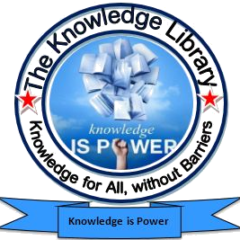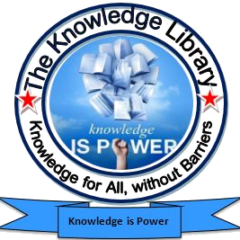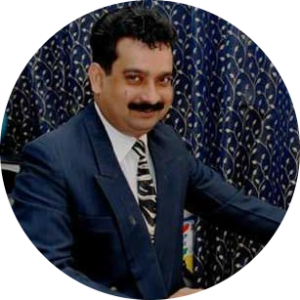Chandra Shekhar Azad was a prominent figure in the Indian independence movement, known for his unwavering commitment to liberating India from British rule. Here is a brief biography of his life and contributions:
Early Life and Background
Birth and Family: Chandra Shekhar Azad was born on July 23, 1906, in Bhavra, a small village in the Alirajpur district of Madhya Pradesh. He was born into a Brahmin family; his father, Pandit Sitaram Tiwari, was a gardener and his mother, Jagrani Devi, was a homemaker.
Childhood: Azad spent his early years in Bhavra. His upbringing was marked by stories of bravery and valor, which sowed the seeds of patriotism in his young mind.
Education: For further studies, Azad went to Varanasi (then known as Benares). He was admitted to Kashi Vidyapeeth, where he was exposed to nationalist ideas and the plight of India under British rule.
Entry into the Freedom Struggle
Non-Cooperation Movement: Inspired by Mahatma Gandhi’s call for the Non-Cooperation Movement in 1921, Azad, then only 15 years old, participated in the protests. He was arrested by the British police and, when brought before the magistrate, he gave his name as “Azad” (meaning “free”), his father’s name as “Swatantrata” (meaning “independence”), and his residence as “Jail.” This act of defiance earned him the name Chandra Shekhar Azad.
Radical Shift: Disillusioned by the sudden suspension of the Non-Cooperation Movement in 1922, Azad realized that a more radical approach was needed to achieve independence. He joined the Hindustan Republican Association (HRA), founded by Ram Prasad Bismil and others, which aimed to overthrow British rule through armed revolution.
Revolutionary Activities
Hindustan Republican Association (HRA): Azad became an active member of the HRA and was involved in several revolutionary activities. The HRA was later reorganized as the Hindustan Socialist Republican Association (HSRA) with a more socialist ideology.
Kakori Train Robbery (1925): Azad played a key role in the planning and execution of the Kakori Train Robbery on August 9, 1925. The aim was to loot government funds to finance the revolutionary activities of the HRA. The robbery was a daring act against British authority but led to the arrest of many key leaders of the HRA.
Attempt to Blow Up Viceroy’s Train (1926): Azad, along with his comrades, made an unsuccessful attempt to assassinate the Viceroy of India by blowing up his train. This incident further highlighted the resolve of the revolutionaries to challenge British rule.
Lahore Conspiracy Case (1928): After Lala Lajpat Rai was brutally lathi-charged by the police during a protest against the Simon Commission and subsequently died, Azad, Bhagat Singh, Rajguru, and others plotted to avenge his death. They assassinated John Saunders, a British police officer involved in the lathi charge, on December 17, 1928.
Last Stand and Death
Alfred Park Encounter (1931): Chandra Shekhar Azad was betrayed by an informer, and on February 27, 1931, he was surrounded by British police in Alfred Park, Allahabad. He fought bravely until he had only one bullet left. Refusing to be captured alive, he shot himself, fulfilling his vow to remain Azad (free) till his last breath.
Legacy
Heroic Image: Azad’s fearless commitment to India’s independence has made him a legendary figure. His life and sacrifice have inspired countless Indians to fight for their rights and freedom.
Memorials and Honors: Alfred Park in Allahabad has been renamed Chandra Shekhar Azad Park. Numerous statues and memorials have been erected in his honor across India.
Cultural Representation: His life has been portrayed in numerous books, films, and plays, ensuring that his legacy endures. Films like “Shaheed” (1965) and “The Legend of Bhagat Singh” (2002) depict his role in the freedom struggle.
Personal Traits
Charismatic Leader: Azad was known for his charisma, leadership qualities, and ability to inspire his fellow revolutionaries.
Ideological Commitment: He was deeply committed to the cause of socialism and the idea of an independent India free from social and economic exploitation.
Impact on Future Generations
Chandra Shekhar Azad’s bravery and dedication to the cause of Indian independence continue to inspire new generations of Indians. His story is a testament to the power of individual courage in the face of overwhelming odds and remains a cornerstone of India’s rich history of resistance against colonial rule.
Azad’s life exemplifies the spirit of sacrifice and unwavering dedication to the cause of freedom, making him one of the most revered heroes of India’s struggle for independence.
MCQs on Chandrashekhar Azad
When was Chandrashekhar Azad born?
A) 1906
B) 1907
C) 1908
D) 1909
Answer: B) 1907
What was Chandrashekhar Azad’s real name?
A) Chandrashekhar Tiwari
B) Chandrashekhar Pandey
C) Chandrashekhar Singh
D) Chandrashekhar Sharma
Answer: A) Chandrashekhar Tiwari
Which revolutionary organization did Chandrashekhar Azad join?
A) Indian National Congress
B) Hindustan Socialist Republican Association (HSRA)
C) Anushilan Samiti
D) Ghadar Party
Answer: B) Hindustan Socialist Republican Association (HSRA)
Who was the mentor of Chandrashekhar Azad?
A) Bhagat Singh
B) Sukhdev
C) Ram Prasad Bismil
D) Ashfaqulla Khan
Answer: C) Ram Prasad Bismil
In which movement did Chandrashekhar Azad participate at the age of 15?
A) Non-Cooperation Movement
B) Civil Disobedience Movement
C) Quit India Movement
D) Swadeshi Movement
Answer: A) Non-Cooperation Movement
Where did Chandrashekhar Azad get his famous surname “Azad”?
A) After his first arrest
B) During the Kakori Train Robbery
C) While in college
D) After joining HSRA
Answer: A) After his first arrest
What was Azad’s pledge when he adopted his name?
A) To fight for India’s freedom
B) Never to be captured alive by the British
C) To inspire youth
D) To join HSRA
Answer: B) Never to be captured alive by the British
Which major incident is Azad famously associated with in 1925?
A) Jallianwala Bagh Massacre
B) Kakori Train Robbery
C) Chauri Chaura Incident
D) Dandi March
Answer: B) Kakori Train Robbery
Which British officer did Azad attempt to assassinate in Lahore in 1926?
A) John Saunders
B) James A. Scott
C) Reginald Dyer
D) Michael O’Dwyer
Answer: B) James A. Scott
Which park in Allahabad is named after Chandrashekhar Azad?
A) Victoria Park
B) Company Bagh
C) Alfred Park
D) Azad Park
Answer: D) Azad Park
On what date did Chandrashekhar Azad die?
A) 27 February 1931
B) 23 March 1931
C) 15 August 1931
D) 10 December 1931
Answer: A) 27 February 1931
In which city did Chandrashekhar Azad die?
A) Kanpur
B) Allahabad
C) Lahore
D) Delhi
Answer: B) Allahabad
Which revolutionary was closely associated with Azad in the HSRA?
A) Bhagat Singh
B) Rajguru
C) Sukhdev
D) All of the above
Answer: D) All of the above
What was the main objective of the HSRA?
A) To promote Swadeshi goods
B) To overthrow British rule through armed struggle
C) To organize peaceful protests
D) To spread education
Answer: B) To overthrow British rule through armed struggle
Who among the following was NOT a part of the Kakori Conspiracy along with Azad?
A) Ram Prasad Bismil
B) Ashfaqulla Khan
C) Roshan Singh
D) Sardar Patel
Answer: D) Sardar Patel
Which weapon was Azad famous for using?
A) Sword
B) Pistol
C) Bomb
D) Knife
Answer: B) Pistol
Who betrayed Chandrashekhar Azad leading to his last encounter with the police?
A) Mukund Lal Gupta
B) Vishwanath Pathak
C) Veer Bhagat
D) Ganesh Shankar Vidyarthi
Answer: B) Vishwanath Pathak
Where did Chandrashekhar Azad take his last stand?
A) A police station
B) A public park
C) A hideout
D) His home
Answer: B) A public park
Which freedom fighter remarked, “Azad never dies”?
A) Jawaharlal Nehru
B) Mahatma Gandhi
C) Subhas Chandra Bose
D) Sardar Patel
Answer: A) Jawaharlal Nehru
What did Chandrashekhar Azad famously declare about his freedom?
A) “I will never bow to the British.”
B) “I am free and will remain free.”
C) “I will fight till my last breath.”
D) “I am Azad, always Azad.”
Answer: B) “I am free and will remain free.”
Chandrashekhar Azad was a mentor to which famous revolutionary?
A) Rajguru
B) Sukhdev
C) Bhagat Singh
D) Batukeshwar Dutt
Answer: C) Bhagat Singh
Which act of the British government led Azad to take up arms?
A) Rowlatt Act
B) Government of India Act
C) Indian Penal Code
D) Arms Act
Answer: A) Rowlatt Act
What was the reason for Chandrashekhar Azad’s initial arrest?
A) Protesting against British rule
B) Participating in the Non-Cooperation Movement
C) Involvement in Kakori Train Robbery
D) Conspiracy against the government
Answer: B) Participating in the Non-Cooperation Movement
What was Azad’s age when he was first arrested?
A) 12
B) 14
C) 15
D) 17
Answer: C) 15
Which famous revolutionary said, “If yet your blood does not rage, then it is water that flows in your veins”?
A) Bhagat Singh
B) Chandrashekhar Azad
C) Ram Prasad Bismil
D) Ashfaqulla Khan
Answer: B) Chandrashekhar Azad
Chandrashekhar Azad’s last encounter with the British police was in which park?
A) Company Bagh
B) Jallianwala Bagh
C) Alfred Park
D) Subhas Park
Answer: C) Alfred Park
Who described Azad’s death as a “great loss to the country”?
A) Jawaharlal Nehru
B) Mahatma Gandhi
C) Subhas Chandra Bose
D) Rabindranath Tagore
Answer: A) Jawaharlal Nehru
In which year did Azad join the Hindustan Republican Association (HRA)?
A) 1921
B) 1922
C) 1923
D) 1924
Answer: D) 1924
Who was the president of the Hindustan Socialist Republican Association (HSRA) when Azad was active?
A) Bhagat Singh
B) Ram Prasad Bismil
C) Chandrashekhar Azad
D) Yogendra Shukla
Answer: C) Chandrashekhar Azad
What was Azad’s role in the HSRA?
A) President
B) Secretary
C) Treasurer
D) Member
Answer: A) President
Who was Azad’s close associate in the Kakori Conspiracy?
A) Bhagat Singh
B) Sukhdev
C) Ram Prasad Bismil
D) Rajguru
Answer: C) Ram Prasad Bismil
Which jail was Azad first imprisoned in?
A) Allahabad Jail
B) Naini Jail
C) Lucknow Jail
D) Alipore Jail
Answer: B) Naini Jail
In which year did the Kakori Train Robbery take place?
A) 1923
B) 1924
C) 1925
D) 1926
Answer: C) 1925
Who among the following was a co-founder of HSRA along with Azad?
A) Rajguru
B) Sukhdev
C) Bhagat Singh
D) Ram Prasad Bismil
Answer: C) Bhagat Singh
Which revolutionary group did Azad join after HRA was dissolved?
A) Ghadar Party
B) Indian National Army
C) Hindustan Socialist Republican Association (HSRA)
D) Anushilan Samiti
Answer: C) Hindustan Socialist Republican Association (HSRA)
Chandrashekhar Azad was known for his bravery and what else?
A) Diplomacy
B) Strategy
C) Wealth
D) Education
Answer: B) Strategy
What was Azad’s main weapon of choice?
A) Sword
B) Pistol
C) Rifle
D) Bomb
Answer: B) Pistol
Which revolutionary act is Azad famously remembered for orchestrating in 1925?
A) Chauri Chaura Incident
B) Kakori Train Robbery
C) Salt Satyagraha
D) Jallianwala Bagh Massacre
Answer: B) Kakori Train Robbery
What was Azad’s motto?
A) “Do or die”
B) “Live free or die”
C) “Swaraj is my birthright”
D) “Inquilab Zindabad”
Answer: B) “Live free or die”
Who was the British officer that Azad attempted to assassinate in Lahore in 1926?
A) John Saunders
B) James A. Scott
C) Reginald Dyer
D) Michael O’Dwyer
Answer: B) James A. Scott
Which famous revolutionary organization was formed by Chandrashekhar Azad and Bhagat Singh?
A) Hindustan Republican Association
B) Indian National Congress
C) Ghadar Party
D) Hindustan Socialist Republican Association
Answer: D) Hindustan Socialist Republican Association
Who was Azad’s contemporary in the revolutionary activities against the British?
A) Mahatma Gandhi
B) Sardar Patel
C) Subhas Chandra Bose
D) Bhagat Singh
Answer: D) Bhagat Singh
How did Chandrashekhar Azad evade the British police for many years?
A) Changing his appearance
B) Constantly moving locations
C) Having a network of supporters
D) All of the above
Answer: D) All of the above
Which famous slogan is attributed to Azad?
A) “Inquilab Zindabad”
B) “Jai Hind”
C) “Swaraj is my birthright”
D) “Quit India”
Answer: A) “Inquilab Zindabad”
What was the purpose of the Hindustan Socialist Republican Association (HSRA)?
A) To promote Swadeshi goods
B) To organize peaceful protests
C) To overthrow British rule through armed struggle
D) To spread education
Answer: C) To overthrow British rule through armed struggle
What was Azad’s position in the Hindustan Republican Association (HRA)?
A) President
B) Secretary
C) Treasurer
D) Member
Answer: D) Member
Who was Azad’s close associate who was also executed in the Kakori Conspiracy?
A) Bhagat Singh
B) Ashfaqulla Khan
C) Rajguru
D) Sukhdev
Answer: B) Ashfaqulla Khan
Chandrashekhar Azad was a master of which form of combat?
A) Sword fighting
B) Hand-to-hand combat
C) Guerrilla warfare
D) Naval warfare
Answer: C) Guerrilla warfare
What was Azad’s response when he was surrounded by British police?
A) Surrendered peacefully
B) Fought valiantly and took his own life
C) Tried to escape
D) Negotiated with the police
Answer: B) Fought valiantly and took his own life
Who gave Chandrashekhar Azad the title “Azad”?
A) His mentor Ram Prasad Bismil
B) His fellow revolutionaries
C) Himself
D) The British police
Answer: C) Himself
In which Indian state was Chandrashekhar Azad born?
A) Uttar Pradesh
B) Madhya Pradesh
C) Maharashtra
D) Bihar
Answer: B) Madhya Pradesh
Which of the following describes Azad’s approach to fighting the British?
A) Non-violent resistance
B) Political negotiation
C) Armed struggle
D) Judicial appeal
Answer: C) Armed struggle
Chandrashekhar Azad died at what age?
A) 23
B) 25
C) 27
D) 30
Answer: C) 27
Who were Azad’s main targets in his revolutionary activities?
A) British officers
B) Indian landlords
C) Political leaders
D) Foreign businessmen
Answer: A) British officers
What was the significance of Azad’s final act of shooting himself?
A) To avoid torture
B) To keep his promise of never being captured alive
C) To inspire others
D) All of the above
Answer: D) All of the above
Which contemporary leader admired Chandrashekhar Azad’s bravery?
A) Jawaharlal Nehru
B) Mahatma Gandhi
C) Subhas Chandra Bose
D) Rabindranath Tagore
Answer: A) Jawaharlal Nehru
Chandrashekhar Azad was instrumental in which of the following acts?
A) Dandi March
B) Jallianwala Bagh Massacre
C) Non-Cooperation Movement
D) Kakori Train Robbery
Answer: D) Kakori Train Robbery
Who said, “Azad never dies” after Azad’s death?
A) Bhagat Singh
B) Jawaharlal Nehru
C) Mahatma Gandhi
D) Subhas Chandra Bose
Answer: B) Jawaharlal Nehru
What was Azad’s famous declaration to the British authorities?
A) “You cannot rule over us.”
B) “I will die a free man.”
C) “I am free and will remain free.”
D) “Inquilab Zindabad.”
Answer: C) “I am free and will remain free.”
Which revolutionary leader influenced Azad’s early years?
A) Bhagat Singh
B) Lala Lajpat Rai
C) Bal Gangadhar Tilak
D) Ram Prasad Bismil
Answer: D) Ram Prasad Bismil
In what year did Chandrashekhar Azad join the Hindustan Republican Association (HRA)?
A) 1923
B) 1924
C) 1925
D) 1926
Answer: B) 1924
Which Indian state is associated with Azad’s revolutionary
activities?
A) Maharashtra
B) Punjab
C) Uttar Pradesh
D) Bihar
Answer: C) Uttar Pradesh
What did Azad do when he was surrounded by the British police in Alfred Park?
A) Surrendered
B) Fought and shot himself
C) Escaped
D) Asked for reinforcements
Answer: B) Fought and shot himself
Who was Azad’s comrade in the assassination attempt on James A. Scott?
A) Bhagat Singh
B) Rajguru
C) Sukhdev
D) Ashfaqulla Khan
Answer: A) Bhagat Singh
What motivated Azad to join the Indian independence movement?
A) British atrocities
B) Inspiration from other revolutionaries
C) Personal loss
D) Education in revolutionary ideas
Answer: B) Inspiration from other revolutionaries
Who was the police officer that Chandrashekhar Azad shot in retaliation for the death of Lala Lajpat Rai?
A) John Saunders
B) James A. Scott
C) Reginald Dyer
D) Michael O’Dwyer
Answer: A) John Saunders
What legacy did Chandrashekhar Azad leave behind?
A) Peaceful protests
B) Armed resistance against British rule
C) Political diplomacy
D) Educational reforms
Answer: B) Armed resistance against British rule
Which freedom fighter worked closely with Azad in HSRA?
A) Rajguru
B) Sukhdev
C) Bhagat Singh
D) All of the above
Answer: D) All of the above
Chandrashekhar Azad’s actions inspired which future movements?
A) Civil Disobedience Movement
B) Quit India Movement
C) Indian National Army’s activities
D) All of the above
Answer: D) All of the above
What was Chandrashekhar Azad’s ultimate aim?
A) Independence for India
B) Personal glory
C) Establishing a socialist state
D) Reforming the Indian National Congress
Answer: A) Independence for India
These questions cover various aspects of Chandrashekhar Azad’s life, his contributions to the Indian freedom struggle, and his legacy.



 Users Today : 261
Users Today : 261 Total views : 666844
Total views : 666844